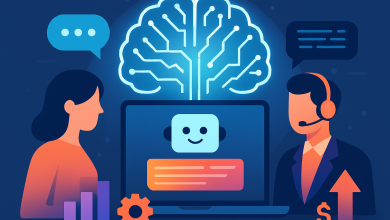
What We Talk About When We Talk About Responsible AI
As companies rush to deploy AI across global markets, discussions around responsibility tend to center on three key pillars: regulatory compliance, cultural relevance, and linguistic adaptation. These are essential foundations for any responsible AI strategy. But they’re not enough to unlock AI’s full potential.
What’s missing from nearly every “responsible AI” blueprint is the role of earned experience, the kind that only accumulates through decades of work, judgment, and life. Generative AI works best not when it replaces knowledge, but when it amplifies it. Yet, the very workers best suited to wield that amplification—those over 45—are often excluded from discussions on AI implementation.
Responsible AI isn’t just about safety and fairness. It’s fundamentally about quality. Companies that want systems to perform more accurately, interpret more wisely, and adapt more effectively need to design with, and for, the people who already know what good judgment looks like.
The Superpower We’re Overlooking: Lived Experience
AI rewards users who bring context, nuance, and informed judgment to the conversation. These aren’t traits that can be learned in a training module. They’re outputs of a career. People with lived experience instinctively know when an AI-generated idea feels off, when a prompt is misleading, or when a model is hallucinating.
In a 2023 study of U.S. call centres, novice workers saw the biggest productivity boost from AI, as it helped them catch up to their more experienced peers. But who helps the AI catch up? Experienced workers do—those whose internalized frameworks and professional intuition help AI evolve from good to great.
The interface for AI tools is deceptively simple. What matters is the input. The better the input, the better the outcome. And lived experience is the ultimate prompt library.
Why Age Isn’t a Risk. It’s a Strategic Advantage
Much discussion focuses on older workers being slow to adopt AI. But recent data from Generation and YouGov tell a different story. Among workers aged 45+ using AI, most are self-taught and frequent users. In Europe, 58% reported AI made their jobs more enjoyable; in the U.S., 35% said it enabled more advanced work.
These aren’t technological laggards, they’re latent power users. Older workers don’t use AI to compensate for inexperience. They utilize it to expand their expertise, test complex ideas, and act with greater discernment. A 2024 study from Japan found that continuous AI users achieved 7.8% productivity gains compared to 4.4% for new users, suggesting that sustained experience with AI tools compounds their benefits.
U.S. and European employers are significantly less likely to consider candidates over 60 for roles that incorporate AI. That means companies are sidelining the workforce segment best equipped to make AI outputs more valuable.
A recent Upwork survey found that 77% of employees using AI said it increased their workload, and nearly half didn’t know how to achieve productivity gains. The problem isn’t adoption. Its implementation. Companies are focused on who can use AI, not who can use it well.
Designing for Judgment, Not Just Speed
Localization rightly focuses on translating AI for languages and cultures. But what about adapting it to different cognitive models? In many global markets, older professionals carry institutional memory – how decisions get made, how trust is earned, how risk is managed.
That’s not cultural baggage. It’s strategic intelligence. When deploying AI globally, companies should form multigenerational design teams and test across age groups as rigorously as they test across regions.
Responsible AI means reflecting how people think, not just how they speak. One of the most under-discussed aspects of implementation is embedding experienced judgment, not just through pilot programs, but as part of system architecture.
The Cognitive Interface Is Already Built
We often treat prompt engineering as the hardest part of AI. However, prompting is just another form of transferring knowledge, similar to writing a brief, a legal memo, or a pitch. What makes it effective is the underlying thought process. And experienced professionals bring sharper thinking to the table.
Studies show conversational interfaces work especially well for older adults, particularly when tech mirrors natural communication patterns. The Nielsen Norman Group found that while digital ability may taper slightly with age, older adults often interact more strategically, based on decades of information use.
Most AI platforms already use the interface older professionals prefer: conversation. Unlike complex multi-touch gestures or intricate menu systems, AI responds to the same communication skills that experienced workers have refined over the course of decades. Research on voice assistants shows that older adults excel particularly when technology mimics human conversation patterns, creating what researchers call “social presence.”
Consider the potential of AI training sessions tailored to specific use cases, developed by experienced professionals, rather than generic tool tutorials. Imagine mentorship pairs where younger workers teach interface mechanics while older colleagues share decision-making frameworks. That’s not just responsible AI implementation, that’s sustainable intergenerational infrastructure.
Age as Infrastructure: A New Model for Inclusion
The future of responsible AI extends beyond avoiding harm to actively amplifying value. The most effective approach involves elevating inputs that truly matter: context, discernment, institutional memory, and seasoned instinct. All of these represent byproducts of professional experience that can’t be artificially generated.
Inclusion isn’t merely a moral mandate in responsible AI. It’s a fundamental design decision. In competitive global markets, companies that intentionally harness age-diverse teams will develop AI models that gain deeper insights into complex problems, adapt more quickly to changing conditions, and generate more genuinely human-centric outputs.
Age isn’t a risk factor to be carefully mitigated. It’s a strategic strength that can be actively leveraged for a competitive advantage.
Building Responsible AI Through Responsible Design
AI systems don’t operate in isolation. They reflect their inputs, design principles, and real-world use cases. If organizations want AI that is truly responsible, fair, effective, and globally adaptive, they must reconsider who shapes these systems from conception through deployment.
Professional experience isn’t a lagging indicator of innovation. It’s the hidden engine behind resilient systems, better questions, and more intelligent decisions. When older, experienced professionals are brought into the heart of AI development, not as an afterthought, but as architects, we don’t just make AI more inclusive.
We make it better.
This isn’t inclusion for the sake of inclusion. It’s a strategy.





